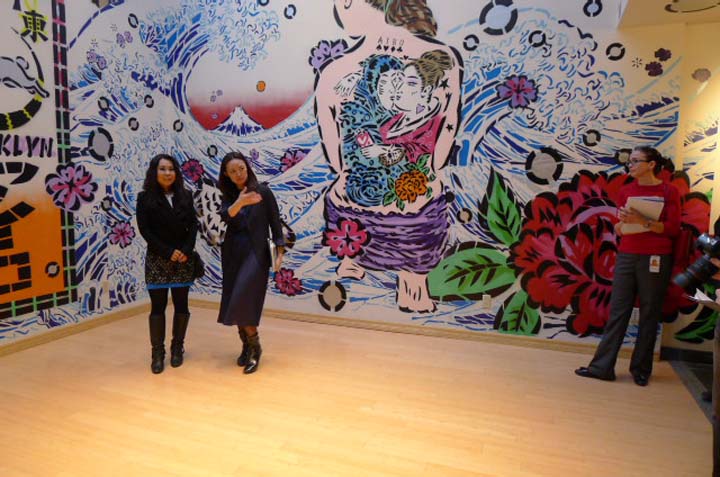The Floating World of Edo Pop
The Edo period in Japan, between 1603 and 1868, is the time of shoguns and daimyo, warriors and aristocrats who ruled the country and brought stability and economic growth after a long period of military conflict. Under their strict and isolationist policies, a tightly organized society enjoyed prosperity; tourism blossomed along newly built highways that linked 300 regional districts with the capital of Kyoto; and popular culture emerged full force among the newly rich merchant class in Edo, today’s Tokyo.
The pop art of the time was woodblock prints, which depicted the sensuous pleasures to be found in Edo. Reflecting the interests and activities of the haute bourgeoisie, the prints first featured the reigning beauties of the red light district and the dashing actors of the Kabuki theater, the pop stars of the time. Later, artists expanded their repertoires to include landscapes, floral studies, legendary heroes, and even ghoulish themes. These were called “ukiyo-e,” or pictures of the floating world.

Left: AIKO, who created a mural for Edo Pop. Right: Miwako Tezuka, Director of The Japan Society Gallery.
In a new exhibition at Japan Society, Edo Pop: The Graphic Impact of Japanese Prints, the floating world of Edo is met by contemporary artists inspired by this traditional form. One hundred woodblock prints from the Minneapolis Institute of Art are arranged alongside works by 10 contemporary artists, both Japanese and Western.
Organized by The Japan Society Gallery’s new director, Miwako Tezuka, the exhibition has been reconfigured from its original installation in Minneapolis to include contemporary works selected by Dr. Tezuka who commissioned AIKO, a Brooklyn-based street artist, to create an updated view of the floating world. Here, brothel-dwellers from traditional prints become edgy "grrls" from the boroughs in a stenciled and spray-painted tableau that fills the skylight gallery that opens the show.
Beauty, theater, the joy of life, and outings to the countryside were among the popular concerns of Edo, and that is how Dr. Tezuka has organized the exhibition. The landscape section features what is perhaps the most famous woodblock print of all time, Katsuchika Hokusai’s “The Great Wave off Kanagawa.” One of the artist’s “Thirty-six Views of Mount Fuji,” this print depicts a perfect storm about to capsize two small boats, with Mount Fuji looming in the distance. In the same gallery is large-scale wood engraving by Kazama Sachiko, born in Tokyo in 1972. She adopted the traditional ideas of ukyo-e, but creates mural-size images of a world broken by wars and disasters, and prints only in black and white.
In the small gallery beyond are selections from The River Series by Hatakeyama Naoya, born in 1958, who lives in Tokyo. Hatakeyama creates mesmerizing photographs that starkly contrast flaws of city life as embodied by water flowing through an open sewage system rendered in luminous colors that transform dystopia into scenes of great beauty. British photographer Emily Allchurch created a series of landscapes that evoke the floating world through their vertical format, pastel tones, and traditional architectural elements. On close view, however, evidence of pollution, homelessness, and urban decay are evident in these large-scale light box prints.
The floating world of Edo has inspired artists since the mid-19th century, when Japan began allowing foreigners in. Ever since then, from the French Impressionists to artists working today, the form, the content, the style and the sensuality of ukyo-e has been a draw. One of the
Edo Pop: The Graphic Impact of Japanese Prints continues through June 9, with public programs on fashion, décor and the subtleties of the floating world.The Japan Society, 333 East 47th Street, NY, NY.


